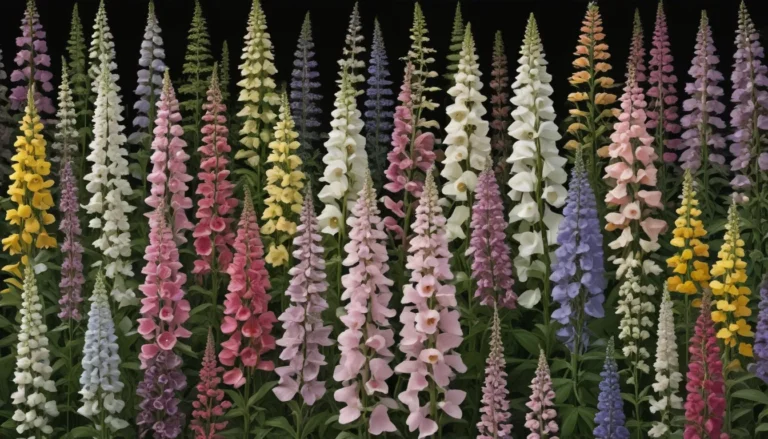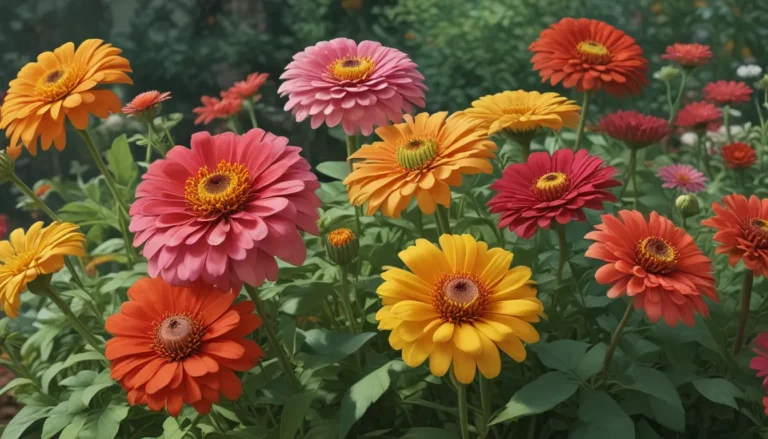The Complete Guide to Growing Stinging Nettle in Your Garden

When I first started gardening, I despised stinging nettle. It seemed to take over my garden, and its painful stings were a constant annoyance. However, as I delved deeper into the world of gardening, I discovered the hidden benefits of this herbaceous perennial.
In this comprehensive guide, we will explore everything you need to know about growing stinging nettle in your garden. From its medicinal uses to propagation and harvesting, we will cover it all. So, grab your gardening gloves and let’s dive in!
What You’ll Learn
- What Is Stinging Nettle? – Medicinal Use and Herbal Remedies – Propagation – How to Grow – Growing Tips – Managing Pests and Disease – Harvesting – Preserving – Cooking Ideas – Nettle Liquid Fertilizer – Quick Reference Growing Guide
What Is Stinging Nettle?
Stinging nettle, also known as Urtica dioica, is a nutrient-rich herbaceous perennial that is often found in wild habitats. It can grow up to four feet tall with toothed leaves and small flowers. One of its most notorious features is the stinging hairs that cause irritation when touched.
Despite being considered an invasive weed in some regions, stinging nettle has a long history of medicinal and culinary use. It has been documented for its textile production, culinary applications, and medicinal properties dating back to 1200 BC.
Medicinal Use and Herbal Remedies
Stinging nettle is a versatile herb that offers a wide range of medicinal benefits. The leaves, roots, and seeds of the plant are commonly used in herbal remedies. From relieving urinary tract infections to reducing inflammation, stinging nettle has been used to address various health issues.
One of the most popular ways to consume stinging nettle is by making tea. Nettle leaf tea is rich in nutrients such as calcium, magnesium, and potassium. It is known for its diuretic properties and is often used to alleviate urinary tract infections.
While there are numerous anecdotal claims about the healing properties of stinging nettle, scientific studies have shown promising results. A clinical trial conducted on patients with type 2 diabetes suggested that stinging nettle extract may have beneficial effects on cardiovascular risk factors.
A Note of Caution: Always consult with a medical professional before using stinging nettle for medicinal purposes, especially if you are pregnant or taking prescription medication.
Propagation
Stinging nettle is easy to grow and can be propagated from seeds or through division. Seeds are tiny and require light for germination. They can be sowed directly in the ground or started indoors in flats.
If you have access to a thriving patch of stinging nettle, you can also divide the plants in late fall and replant them in your garden. Alternatively, you can forage for wild nettles and transplant them to your garden.
When choosing a location to grow stinging nettle, consider its invasive nature and select a site where you can manage its spread. Nettle plants thrive in moist, nitrogen-rich soil and can tolerate a wide range of pH levels.
How to Grow
Stinging nettle is a hardy plant that can thrive in various climates and conditions. It can be grown in full sun to partial shade and requires moist soil. To ensure optimal growth, incorporate composted manure into the soil and keep the plants well-watered.
Harvesting stinging nettle is crucial to encourage new growth and prevent the plants from becoming too tall. Regular pruning and removal of flowering seed heads will help maintain the plant’s vitality. Over winter, the foliage will die back, and the plants will reemerge in spring.
Growing Tips
- Keep the soil moist but not waterlogged. – Plant stinging nettle in a location where you can manage its spread. – Choose a spot with full sun or partial shade.
Managing Pests and Disease
Stinging nettle is a beneficial plant that can attract beneficial insects and butterflies to your garden. By growing stinging nettle, you can reduce the risk of pest infestation for surrounding crops. Studies have shown that nettle plants harbor various beneficial insects that contribute to pest management and biodiversity.
Harvesting
Harvesting stinging nettle can be done safely with the right precautions. Wear gloves, long sleeves, and closed-toe shoes when harvesting the leaves. Cut back the top third of the plant before flowering to ensure optimal flavor and potency.
Stinging nettle leaves can be preserved and consumed in various ways. By drying, freezing, or making tinctures, vinegars, and oxymels, you can extend the shelf life of the leaves and enjoy their benefits year-round.
Cooking Ideas
Stinging nettle leaves can be used in a variety of culinary dishes, from soups and stews to pesto and cheese-making. Their unique flavor profile, described as “irrefutably green,” makes them a versatile ingredient in the kitchen. Experiment with different recipes to discover the best way to incorporate stinging nettle into your meals.
Much More than Just a Sting
Stinging nettle may have a prickly reputation, but its value far outweighs its sting. By growing stinging nettle in your garden, you can enjoy the benefits of this versatile herb while contributing to the health of your garden ecosystem.
So, the next time you come across a patch of stinging nettle, don’t be quick to dismiss it. Embrace its nutrient-rich leaves, medicinal properties, and culinary potential. Who knows, stinging nettle might just become your new favorite herb!
What is your favorite way to use stinging nettle? Share your thoughts in the comments below!





